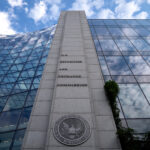Now that the market has achieved a first-half profit of £4.9 billion with a combined ratio of 83.7—its best interim results in 17 years—does this mean the hard market cycle is ending?
During a media briefing to discuss Lloyd’s results, CEO John Neal answered that question with a chuckle. The so-called “supercycle” is likely to be prolonged, he said, citing a reference to the current hard market, which was made earlier this year by Patrick Tiernan, Lloyd’s chief of markets.
“We see no evidence of significant change in the marketplace either from the insurance or the reinsurance community,” Neal said. “It’s been difficult to get to a point where we can convince capital and investors that the returns are sustainable, meaningful and consistent.”
Lloyd’s Reports Best H1 Underwriting Profit Since 2007, With 83.7 Combined Ratio
Now that Lloyd’s has reached this point of sustainable profits, Neal said, there’s no evidence that prices are changing significantly.
“It’s been five years of hard work to get to where we’re at…,” he said, noting that Lloyd’s peer group also have reflected similarly about the need for price adequacy, proper attachment points and the right terms and conditions.
He described H1 results as a “superb set of numbers,” but there’s another six months in the year—along with the remainder of hurricane season—so discipline must be maintained.
“We’re seeing a profitable, growing market that is well positioned to deliver sustainable value for our customers and our capital providers through whatever may happen in the rest of 2024 and actually into 2025,” Neal said.
In the foreseeable future, underwriting discipline will be key to fairly compensate Lloyd’s investors, said Lloyd’s CFO Burkhard Keese during the media briefing.
“This sustainable market performance is a consequence of managing agents staying focused on disciplined technical underwriting and rigor,” Keese added. “From a market oversight position, we will support those managing agents who demonstrate a disciplined approach and will challenge those where the capabilities required to support a disciplined underwriting approach are lacking.”
Gross written premium increased by 6.5%, comprising 5% volume and 1.5% average price growth, “despite all the market rumors of double-digit softening,” Keese said.
While describing the overall rating environment as adequate, he cautioned, there are some classes of business where conditions are challenging. “Portfolio management is key and there are a few classes in particular where we will expect that underwriters ensure they are getting the terms and conditions needed to ensure price adequacy.”
On the Watch List
Keese pointed to general liability in the U.S., where increased risk of litigation and social inflation continue to be an issue and underwriters are expected to price for this. “Without any doubt the claim trends we have seen in the last past five years are concerning, and we have no indication that this trend will not continue.”
Keese said Lloyd’s U.S. general liability reserves are adequate, “but terms must continue to reflect the possibility of further adverse developments.”
Another class of business that is being watched is political violence and terrorism. “Increasing geopolitical risk is clearly a challenge for the underwriters in this class, and we will be looking for evidence that the managing agents are responding to this accordingly, as appropriate, in line with their individual strategies,” he continued.
D&O covers are facing persistently challenging market conditions too, “and we need to see underwriters maintaining a disciplined approach to this class,” Keese said.
Property rates continue to hold up for the moment, “but this is based on today’s assessment of near-term risk. This means potential additional climate change are not yet reflected in current rates, so there is no time for complacency.”
Keese said the market has sufficient profits to be resilient through an active H2 hurricane season.
In addition to disciplined growth, Lloyd’s also has managed down its relative catastrophe risk exposure, he said, noting that market’s enhanced profitability increases its ability to absorb catastrophic events.
Lloyd’s reported a combined ratio (excluding large and catastrophe risks) of 80.6, which is the 12th consecutive quarter the market has performed with an underlying combined ratio of around 80.
“Assuming a net earned premium of £38 billion for 2024, net large losses need to be at least $7.6 billion before we reach a combined ratio of 100,” Keese explained. “In 2017, [Hurricanes] Harvey, Irma and Maria cost us about £3.6 billion, which was 14.7% of the combined ratio at that time. Today, those losses would amount £4.4 billion, but only 11.7% of the combined ratio.”
Keese noted that this means, even during a year like 2017 with three large hurricanes, Lloyd’s combined ratio could remain below 95. “Our profitable growth is sustainable. We have seen 16 quarters of top line growth, and our underlying combined ratio has been 80 for 12 quarters.”
Both executives pointed to the ratings hikes received by AM Best and S&P Global Ratings as the cumulation of a five-year remediation effort towards resilient profitability – a discipline that is likely to continue. (AM Best moved its Lloyd’s rating from “A” to “A+” in August, while S&P raised its rating from “A+” to “AA-” at the end of 2023).
“Performance remains our number one priority both now and for the future,” said Neal. “That profitable performance is backed by our discipline, both in how we underwrite and manage our capital at Lloyd’s.”
Was this article valuable?
Here are more articles you may enjoy.



 USI Says Lockton, Former Team Leader Poached Workers, Harmed Client Relations
USI Says Lockton, Former Team Leader Poached Workers, Harmed Client Relations  Pet Insurance, Agents Gets a Shorter Leash Under Bill DeSantis Signed Into Law
Pet Insurance, Agents Gets a Shorter Leash Under Bill DeSantis Signed Into Law  Markel Insurance Restructures Markel Specialty, Appoints Leaders
Markel Insurance Restructures Markel Specialty, Appoints Leaders  White House Seeks to Bring Financial Regulators Under Its Sway
White House Seeks to Bring Financial Regulators Under Its Sway 

